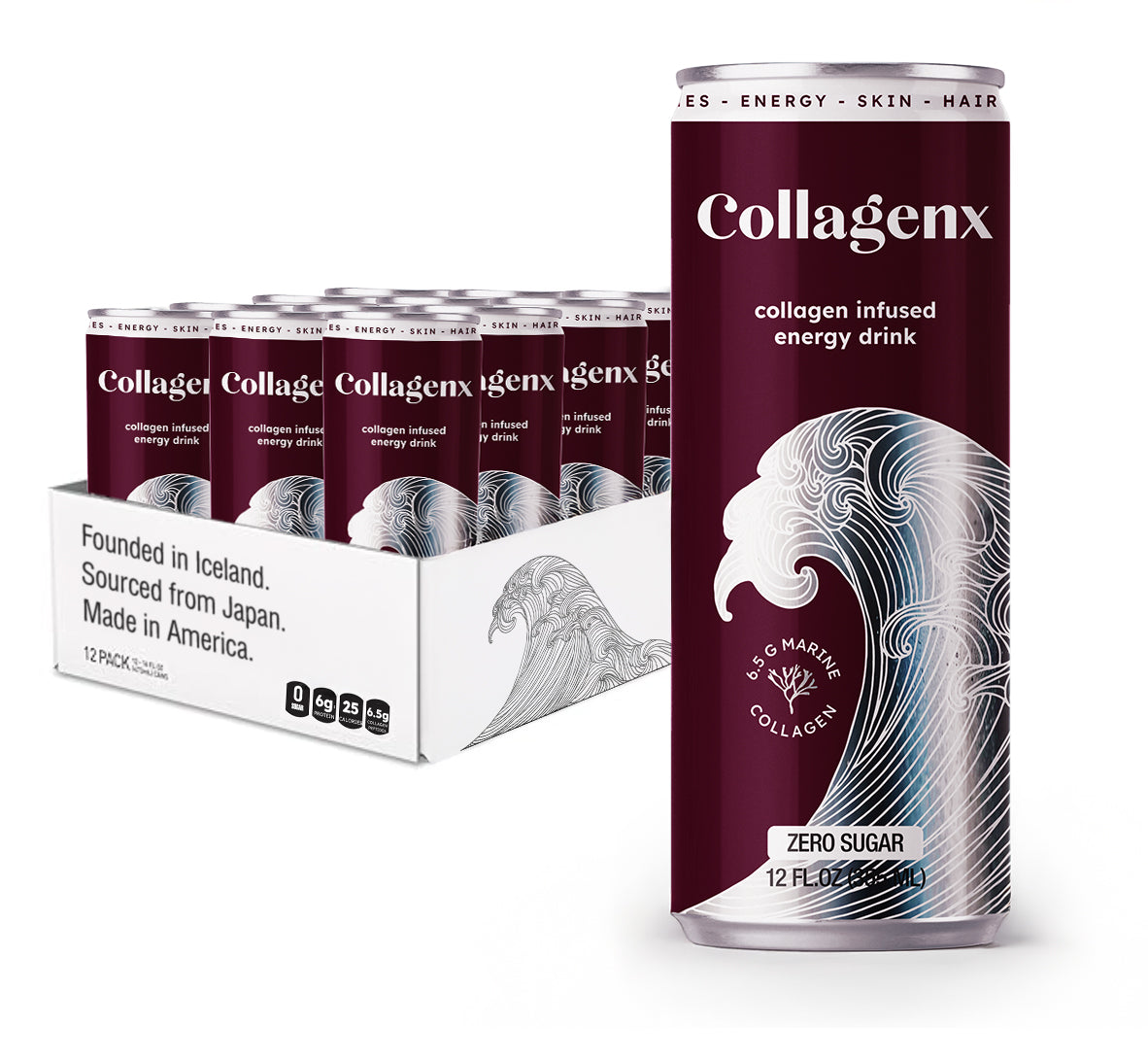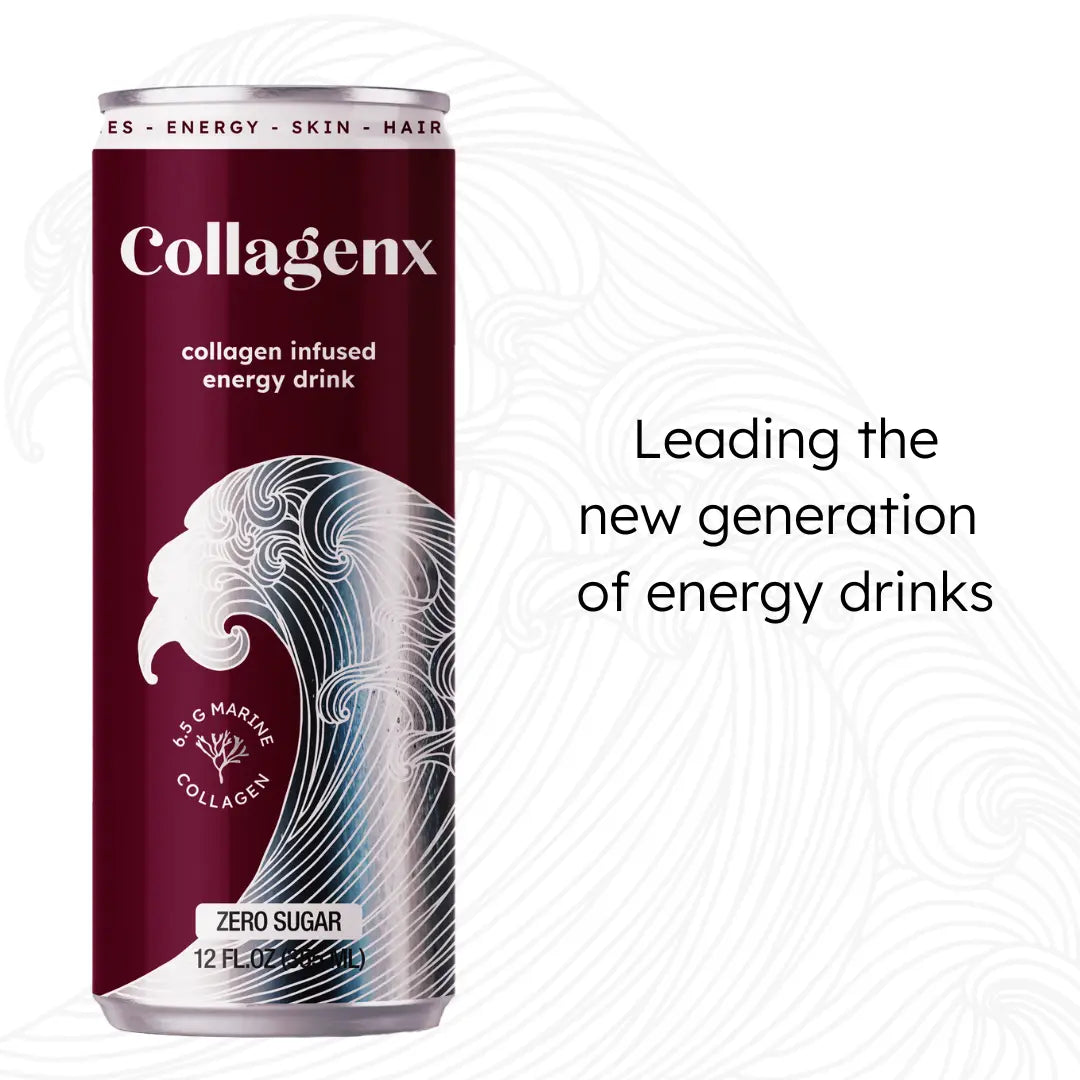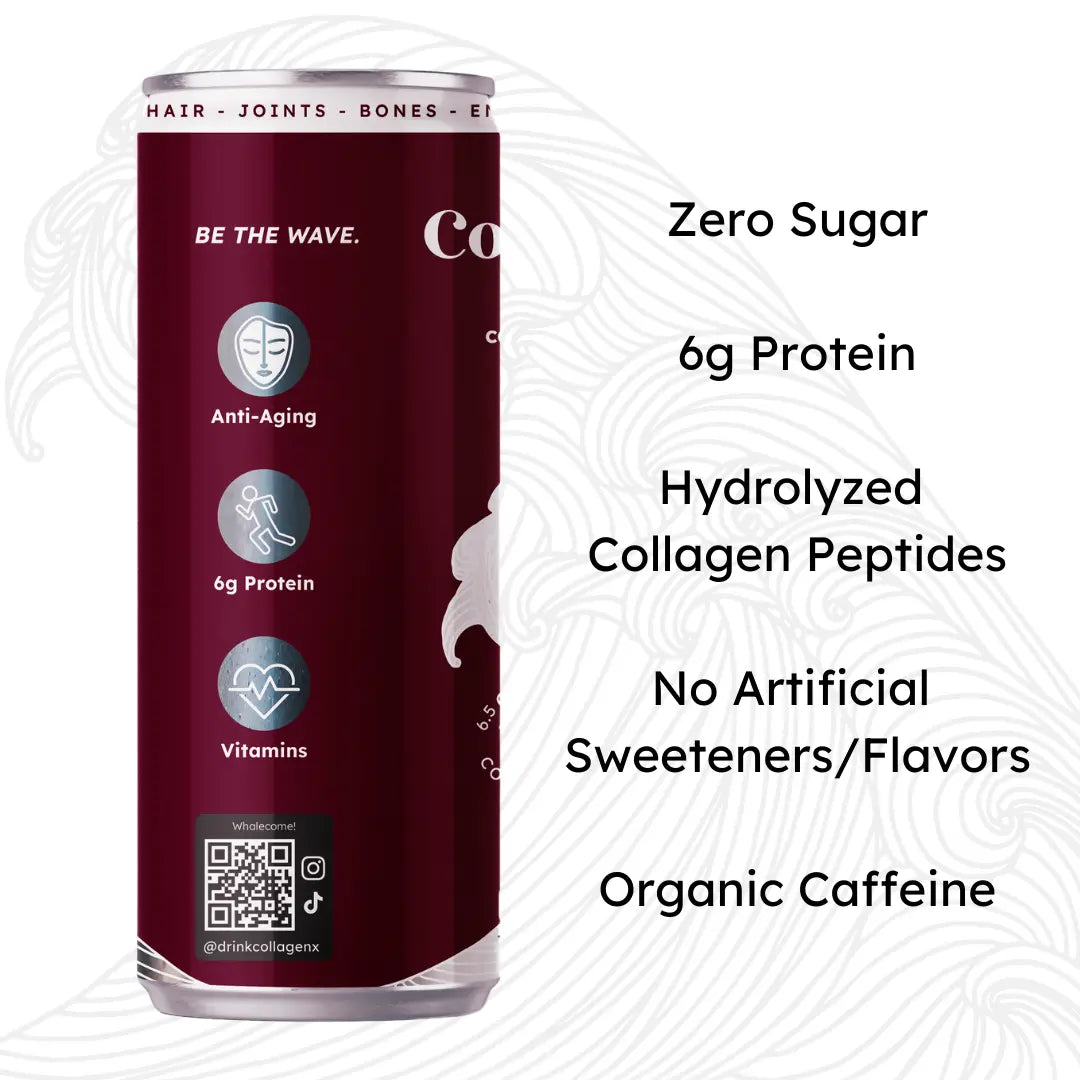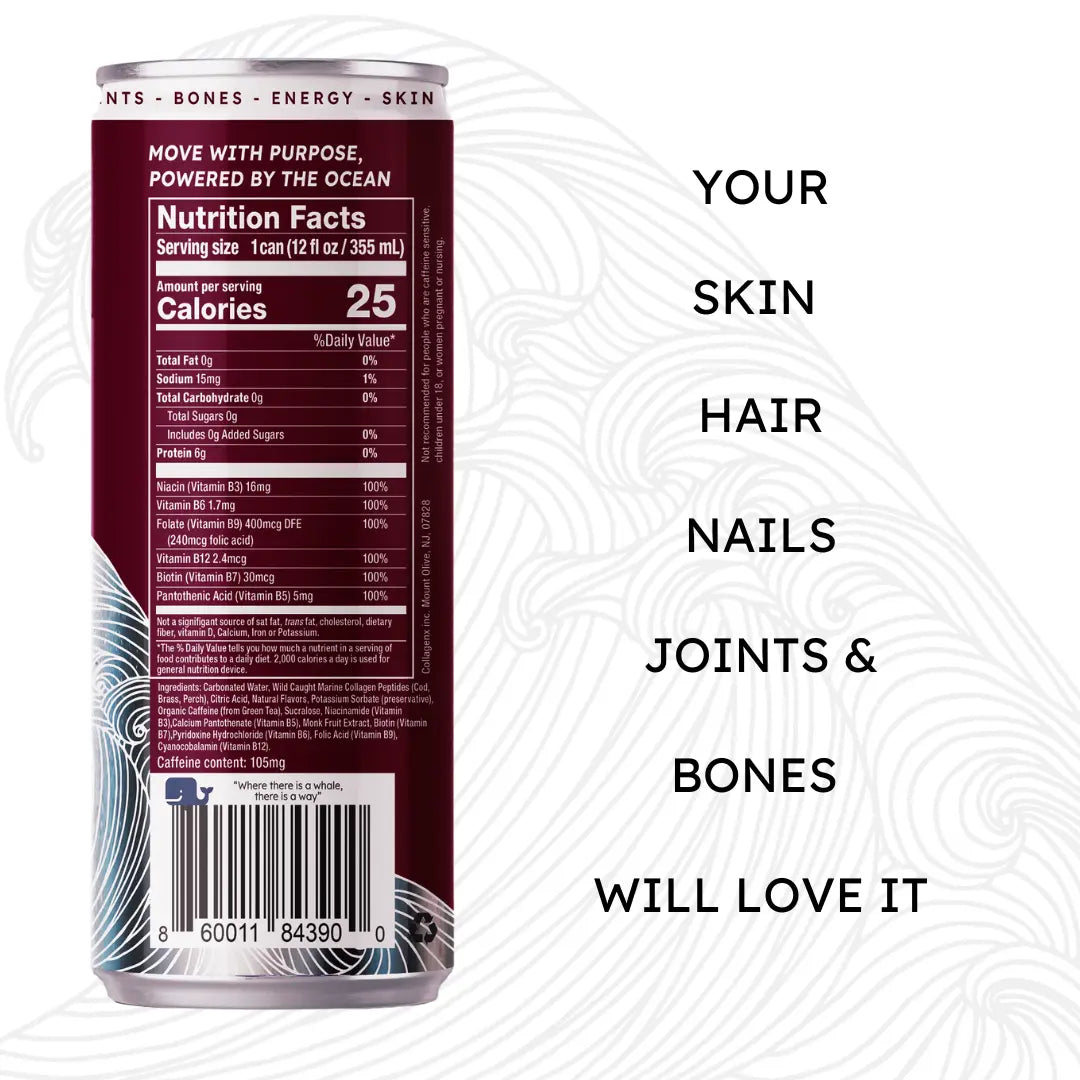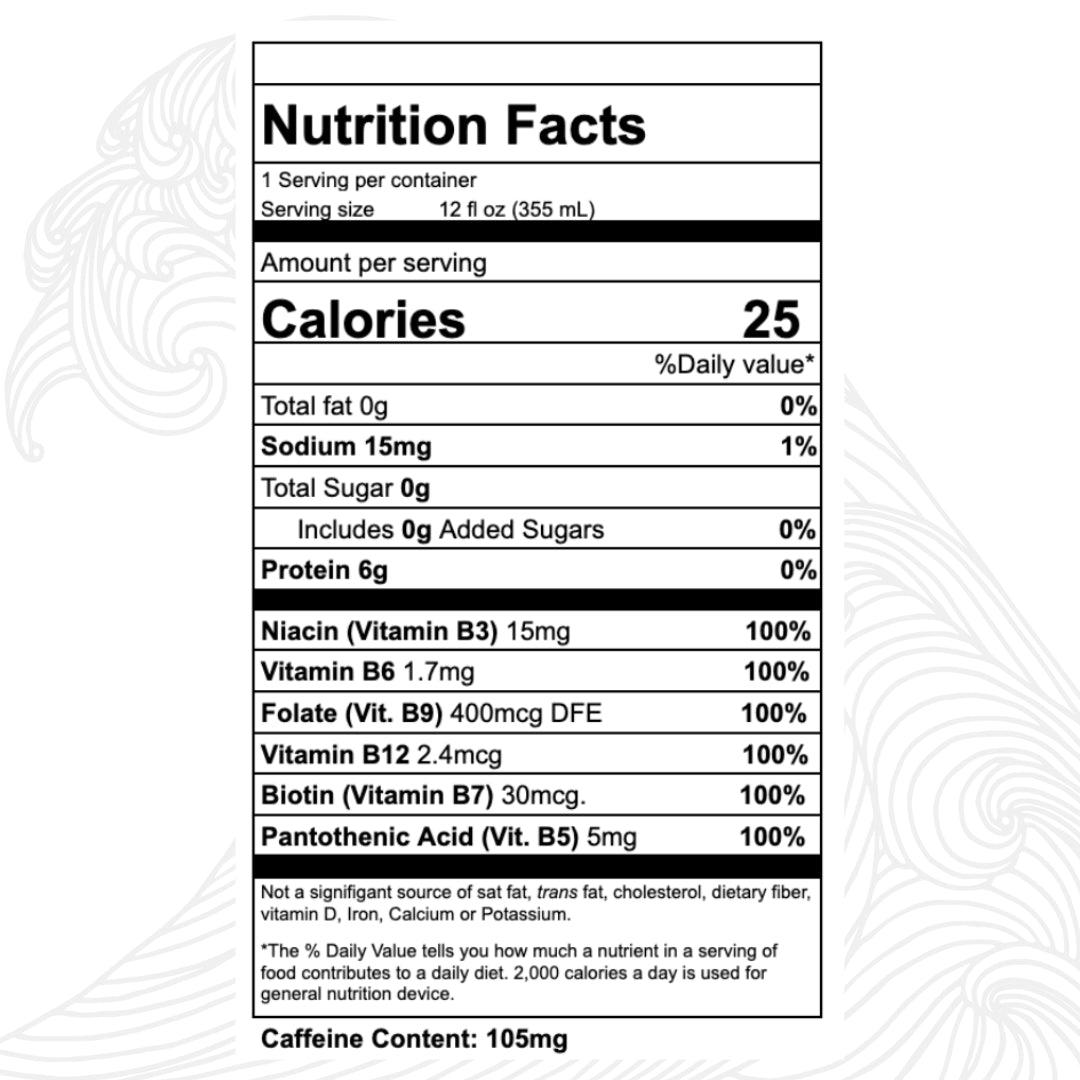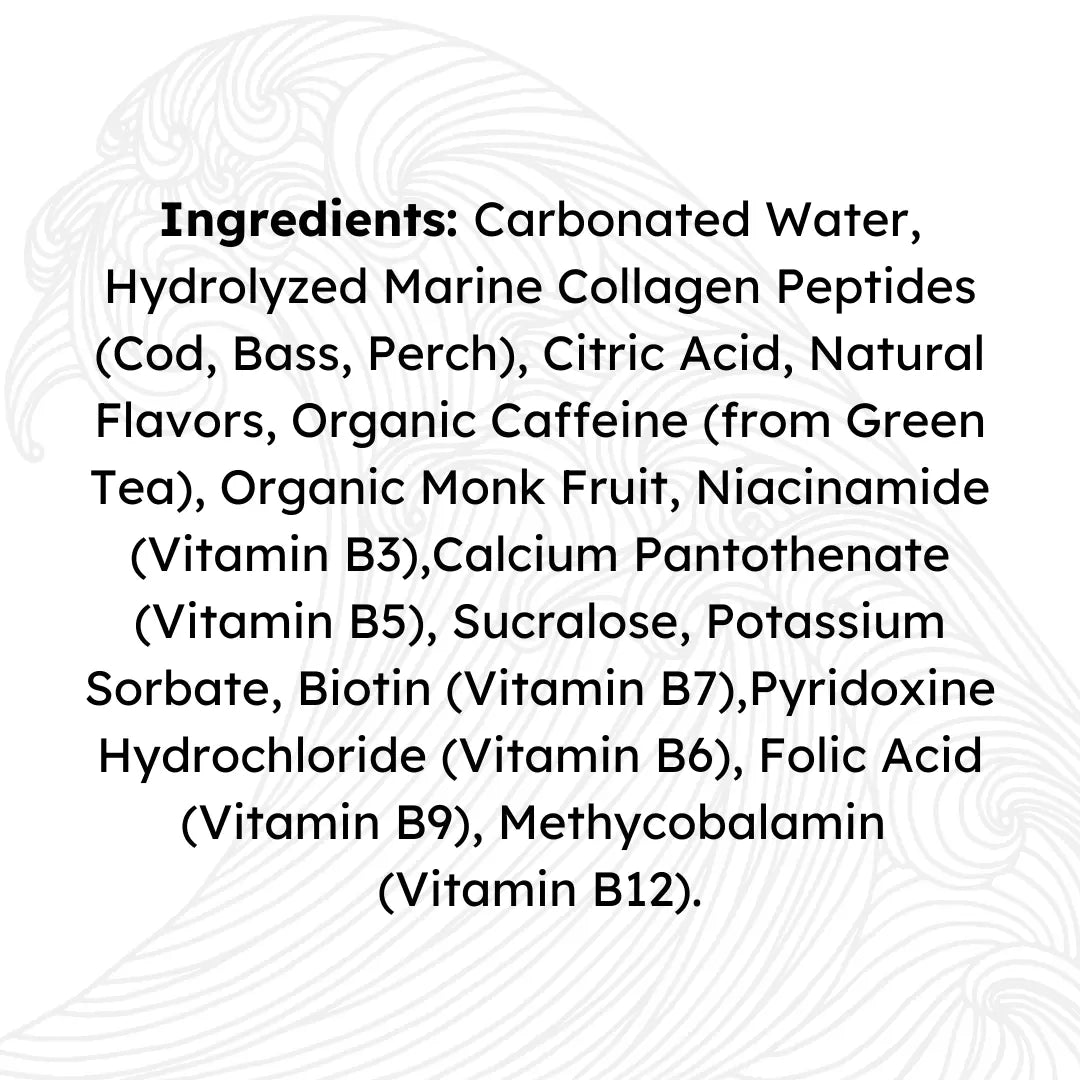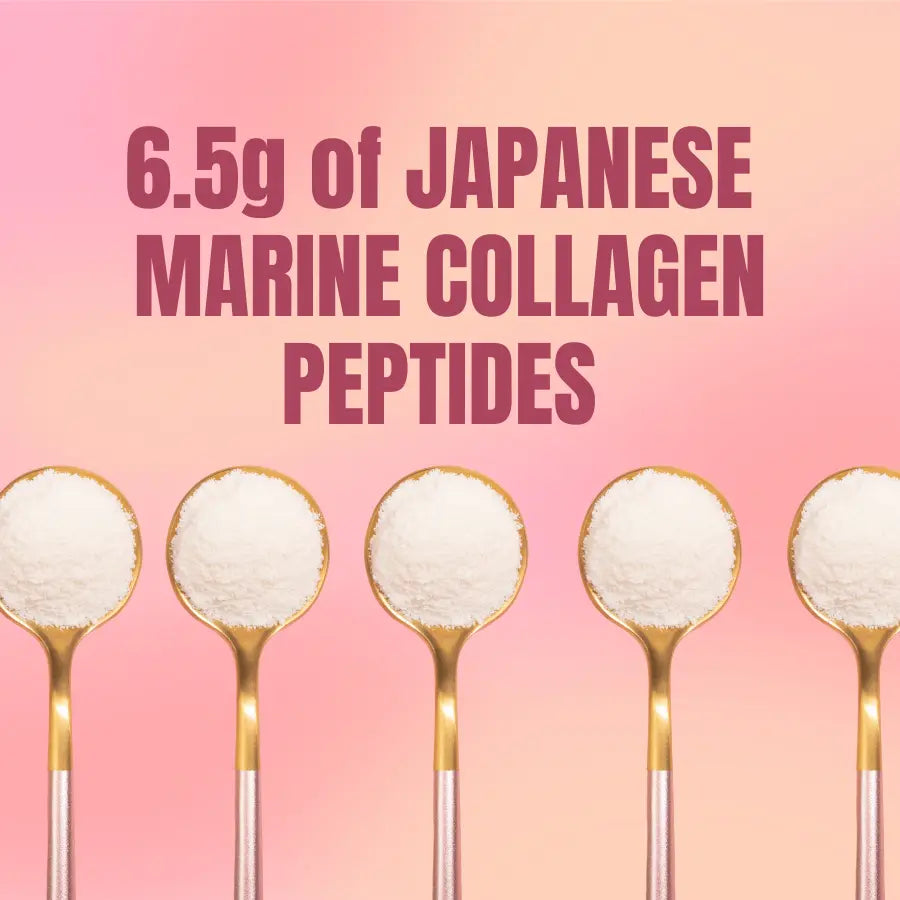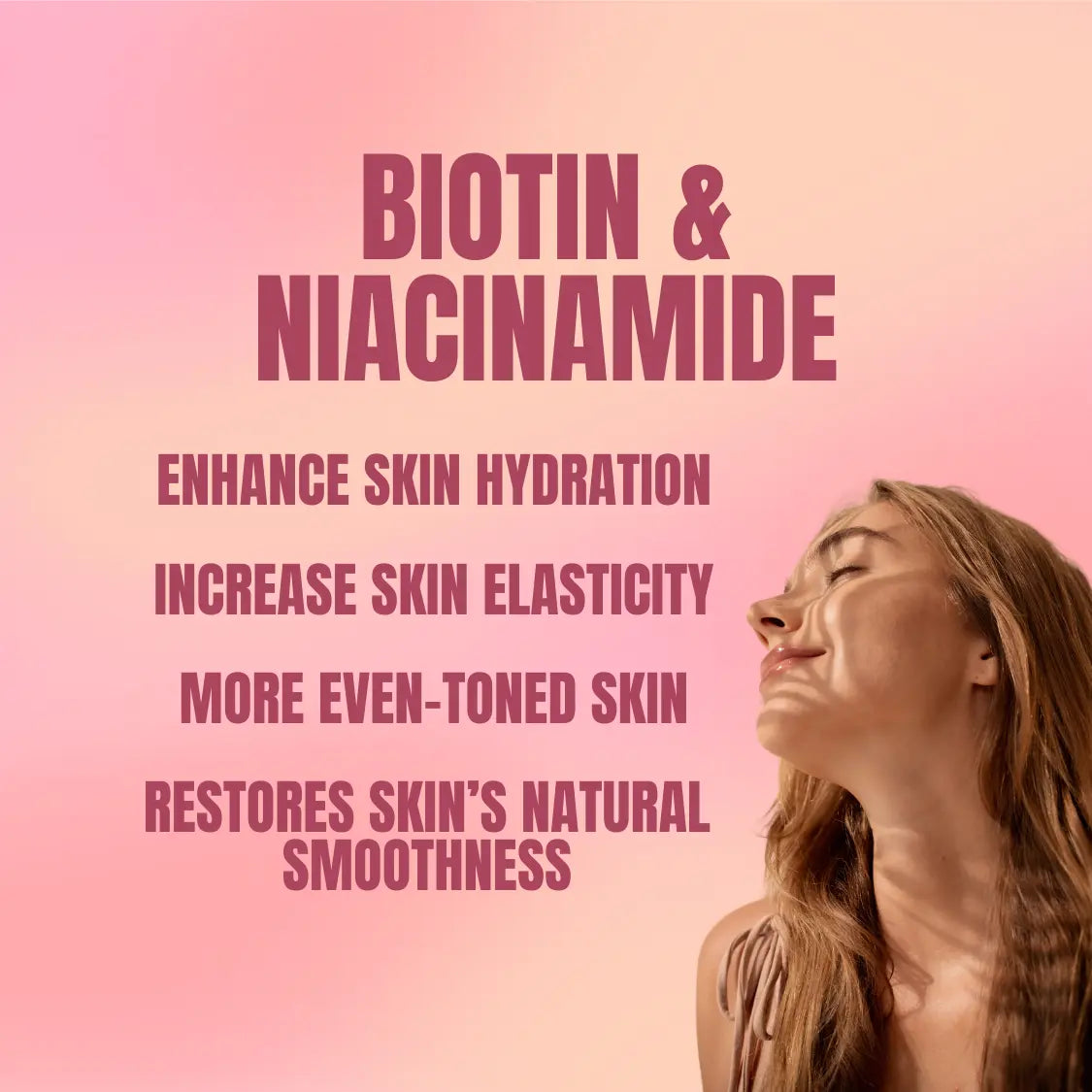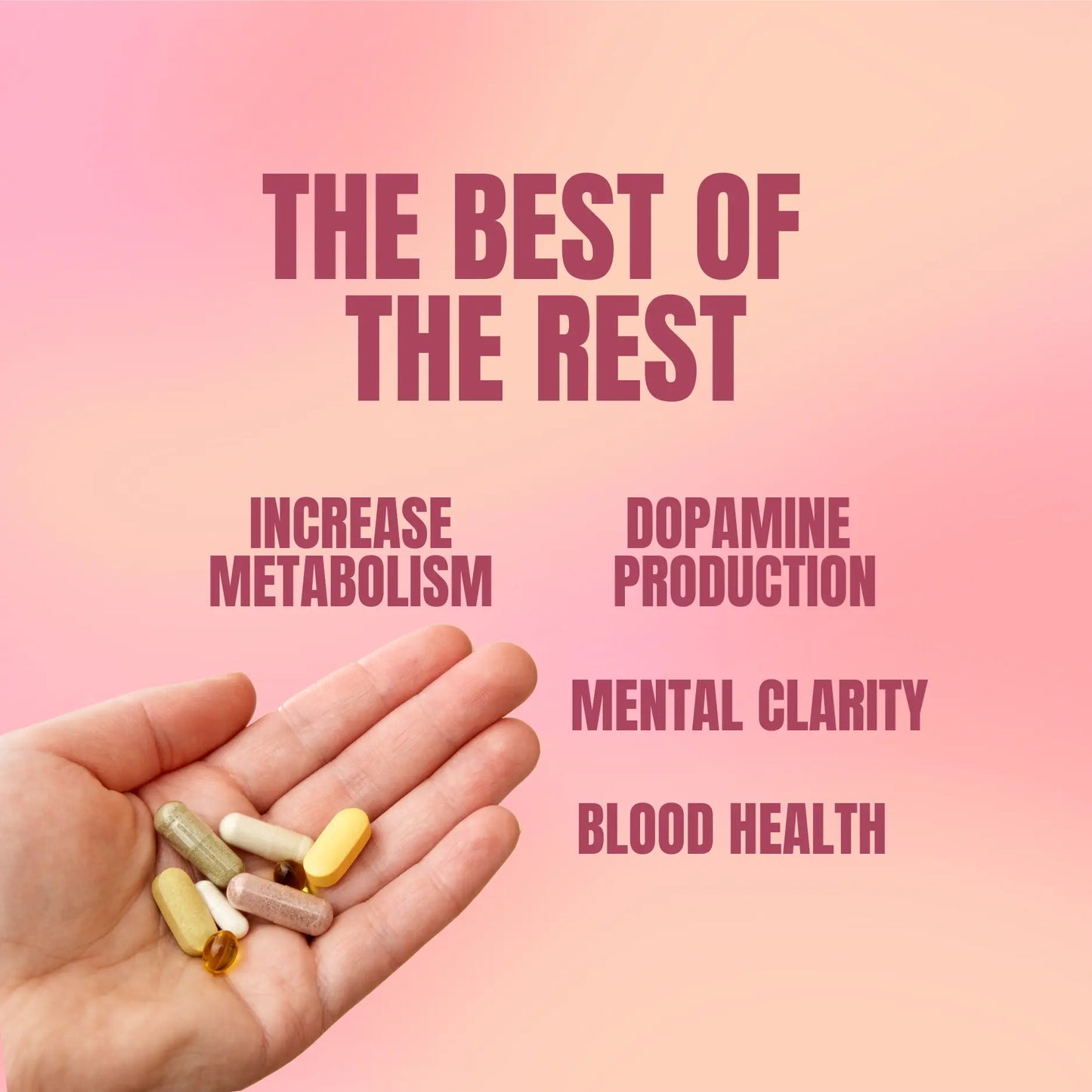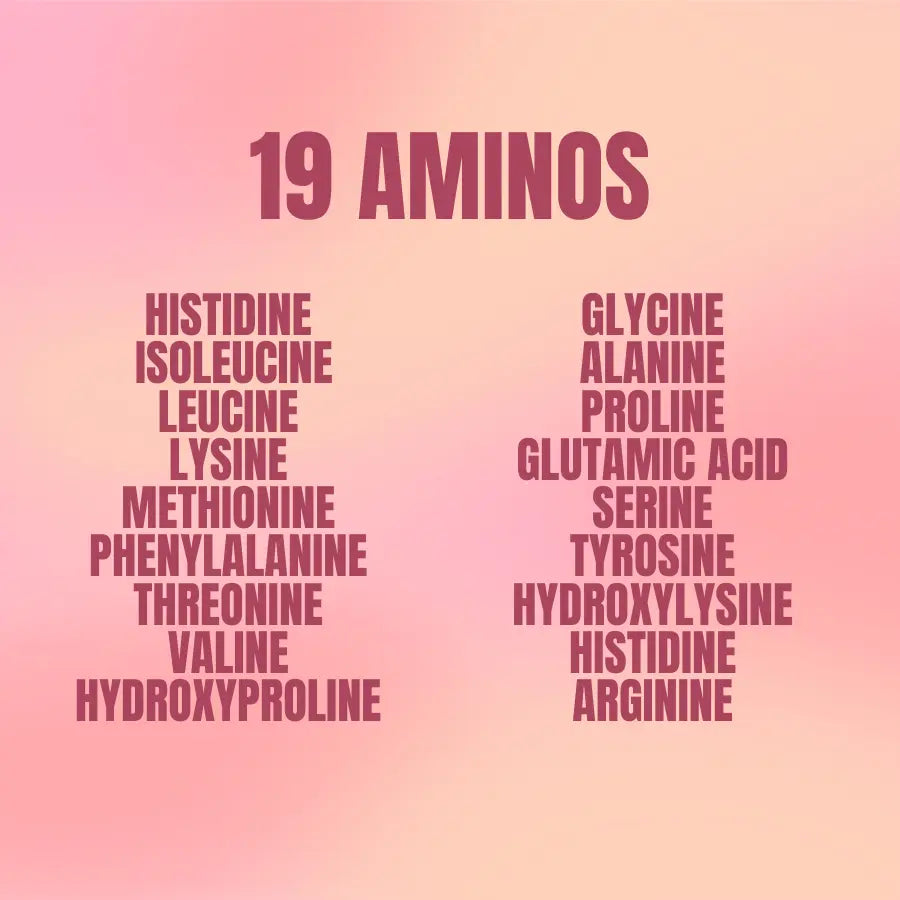
Collagen and Elastin: The Dynamic Duo of Youthful Skin
By Collagenx Research Team ┃ Nov 8, 2024 ┃3 min read
Collagen and elastin are two proteins that play a pivotal role in maintaining the skin’s structure, resilience, and youthful appearance.
Imagine your skin as a trampoline—collagen provides a sturdy frame, while elastin acts as the flexible material that allows it to bounce back after being stretched.
These proteins are fundamental to keeping skin smooth and firm, helping it withstand the daily stretching, compressing, and bending that come with facial expressions, environmental exposure, and natural aging.
Understanding how collagen and elastin proteins work in the skin gives us insight into why we experience wrinkles and sagging over time. As we age, our bodies' production of elastin and collagen decline, leading to a gradual breakdown of the skin’s structure. This reduction results in visible aging signs, such as fine lines, wrinkles, and loss of firmness. Let’s dive deeper into the specifics of these proteins, their functions, and how to support them for healthier skin.
Why you can trust us:
We have former college professors on our team to help analyze clinical studies, see our sources below.
We've successfully created a clean energy drink formula with organic caffeine and Marine Collagen
-
We rigorously study the latest in clinical studies, formulation, and science
Want to know more? Visit our store
Table of Content
Collagen and Elastin: The Dynamic Duo of Youthful Skin

Elastin: The Unsung Hero of Tissue Elasticity
Collagen and Elastin: The Dynamic Duo of Youthful Skin. Elastin, a key protein in the extracellular matrix, plays a vital role in maintaining the elasticity of tissues throughout the body. Imagine a rubber band stretched and released repeatedly—that’s essentially how elastin functions in tissues like the skin, lungs, and blood vessels.
While collagen provides strength and structure, elastin ensures flexibility and resilience, allowing tissues to snap back to their original shape after stretching or compressing. This balance between collagen and elastin is essential for normal tissue function and overall health.
As we age, the production of elastin diminishes, leading to noticeable changes in skin texture, cardiovascular health, and respiratory efficiency. Understanding elastin’s role, how it functions, and the impact of its decline can offer insights into better health practices and potential therapeutic approaches.
1. What is Elastin and How Does It Work?

Elastin is a highly elastic protein found in connective tissues, giving them the ability to stretch and return to their original shape. Unlike collagen, which provides tensile strength, elastin allows tissues to be flexible and resilient. This protein is especially abundant in tissues that undergo frequent stretching, such as arteries, lungs, and skin.
The unique properties of elastin come from its structure—a network of elastic fibers composed of the protein tropoelastin. These fibers are crosslinked by lysyl oxidase, creating a durable and stretchable matrix. This structure is what allows tissues to handle mechanical stress without permanent deformation.
2. The Role of Elastin in the Extracellular Matrix
Elastin works alongside collagen to maintain tissue integrity within the extracellular matrix (ECM). While collagen provides the sturdy scaffolding, elastin adds the flexibility needed for tissues to stretch and recoil. This combination ensures that tissues can withstand mechanical forces, such as the beating of the heart or the expansion and contraction of the lungs during breathing.
Both of the proteins collagen and elastin together form a complex network that supports various physiological functions. Without elastin, tissues would lose their elasticity, becoming stiff and less capable of handling physical stress. This balance is crucial for the proper functioning of organs and tissues.
3. How is Elastin Produced?
Elastin synthesis begins with the production of tropoelastin, the soluble precursor. Tropoelastin is then secreted into the extracellular space, where they are crosslinked to form mature elastin fibers.
This is a simplified breakdown as there are a few more intricate steps involved along the way, but this is the general flow of how elastin is synthesized.
The production of elastin is most active during early development and decreases significantly after adolescence. This limited production in adulthood makes elastin a relatively finite resource, contributing to age-related tissue stiffness as elastin fibers degrade over time.
4. The Function of Elastin in the Skin

In the skin, elastin provides the necessary elasticity to withstand daily movements, stretching, and compressing. This protein allows the skin to return to its original shape after being stretched, much like a rubber band. Over time, however, elastin production declines, leading to a loss of skin elasticity, sagging, and the formation of wrinkles.
What is the purpose of elastin and collagen in the skin? These two proteins work together to maintain skin’s firmness and flexibility. While collagen provides structural support, elastin ensures that the skin can move and stretch without losing its shape. This dynamic duo is crucial for maintaining youthful, resilient skin.
5. Elastin’s Role in Cardiovascular Health

Elastin is a critical component of arterial walls, allowing blood vessels to expand and contract with each heartbeat. This elasticity helps maintain blood pressure and ensures smooth blood flow. As elastin degrades with age, arteries can become stiffer, contributing to conditions like hypertension and atherosclerosis.
What is the function of collagen and elastin fibers in arteries? Collagen provides the structural integrity to withstand high blood pressure, while elastin allows the arteries to expand and contract, facilitating efficient blood circulation. This balance is essential for cardiovascular health and function.
6. The Impact of Elastin Loss on Aging
Aging significantly affects elastin levels, leading to decreased elasticity in various tissues. This loss contributes to several age-related conditions, including wrinkles, sagging skin, stiff arteries, and reduced lung capacity.
What is true of collagen and elastin production over time? Both proteins decline with age, but elastin’s decline has a more noticeable impact on tissue elasticity and resilience. Collagens decline starts in the mid to late twenties, whereas elastin levels decline after adolescence.
The gradual degradation of elastin fibers leads to increased tissue stiffness, reduced elasticity, and a higher risk of mechanical failure, such as ruptured blood vessels or sagging skin.
7. Elastin in the Lungs: Supporting Respiratory Function
Elastin plays a vital role in the lungs, allowing them to expand and recoil during breathing. This elasticity is crucial for efficient gas exchange, as it helps maintain the structural integrity of the alveoli, the tiny air sacs where oxygen and carbon dioxide are exchanged.
What is elastin made of in the lungs? Like in other tissues, lung elastin is composed of tropoelastin molecules crosslinked to form a durable, stretchable network. This network ensures that the lungs can handle the constant mechanical stress of breathing without losing their function or structure.
8. The Difference Between Collagen, Elastin, and Reticular Fibers
What is the difference between collagen, elastin, and reticular fibers? Collagen provides tensile strength and rigidity, elastin offers elasticity and flexibility, and reticular fibers form a supportive mesh in soft tissues. It is important to note that reticular fibers are made from type 3 collagen. Each type of fiber plays a distinct role in maintaining tissue structure and function.
While collagen and elastin are the major players in maintaining skin’s firmness and elasticity, reticular fibers help support the cellular framework of organs like the liver and spleen. Together, these fibers ensure that tissues can withstand mechanical stress and maintain their structural integrity.
9. Factors Affecting Elastin and Collagen Production

Several factors influence the production and degradation of elastin and collagen, including genetics, environmental exposure, and lifestyle choices. UV radiation, for example, accelerates the breakdown of these proteins, leading to premature aging and increased risk of wrinkles and sagging skin.
What is the difference between elastin and collagen in response to environmental factors? In terms of how the environment impacts both collagen and elastin, there doesn’t seem to be any major differences. Both proteins are affected by UV exposure, resulting in reduced skin elasticity and increased wrinkles. Protecting the skin from UV damage through sunscreen and antioxidants can help preserve these vital proteins.
10. Strategies to Support Elastin and Collagen Levels
Maintaining healthy levels of elastin and collagen is crucial for overall tissue health and function. Here are some strategies to support these proteins:
Hydration and Nutrition: A balanced diet rich in vitamins, minerals, and antioxidants supports collagen and elastin production. Foods high in vitamin C, copper, and zinc are particularly beneficial.
Sun Protection: Using sunscreen protects against UV-induced damage, helping to preserve elastin and collagen levels.
Topical Treatments: Skincare products containing retinoids, peptides, and hyaluronic acid can stimulate collagen and elastin production, improving skin elasticity and reducing wrinkles.
Exercise: Regular physical activity promotes healthy blood circulation, which supports the delivery of nutrients to the skin and other tissues, aiding in collagen and elastin maintenance.
Further Readings
→ Is Marine Collagen Vegan?
→ Is Marine Collagen better than Bovine?
"Marine Collagen has the most of Type 1 Collagen which remains mostly in your skin and is over 40% of the protein in your body."
Why Collagenx helps your Elastin.
Marine collagen supports skin elasticity by boosting collagen production and enhancing the interaction with elastin, the protein responsible for skin's resilience and bounce. Here’s how it works:
1. Stimulates Collagen Production
Marine collagen is rich in type I collagen, which is a major structural component of the skin. Supplementing with marine collagen helps replenish collagen levels that naturally decline with age, providing the skin with a firmer and more elastic texture.
2. Enhances Elastin Function
Collagen and elastin work together to maintain skin's structure. Elastin allows the skin to stretch and return to its original shape, while collagen provides the framework. By boosting collagen, marine collagen indirectly supports elastin's function, maintaining that smooth and youthful appearance.
3. Promotes Skin Hydration
Marine collagen improves skin hydration by increasing hyaluronic acid levels, which helps retain moisture. Hydrated skin is more elastic and less prone to sagging or wrinkles.
4. Rich in Amino Acids
Marine collagen provides key amino acids like glycine, proline, and hydroxyproline, which are essential for collagen and elastin synthesis. These amino acids help repair damaged skin and improve overall elasticity.
Incorporating marine collagen into your diet or skincare routine can help slow aging signs, improve elasticity, and support skin’s firmness over time.

Further Readings
→ Can you take bovine and marine collagen together?
→ How much marine collagen per day?
"If you want healthy joints and stronger bones you need Marine Collagen in your diet."
Conclusion
Elastin is an essential protein that provides tissues with the elasticity needed to function efficiently. From the skin and lungs, to the cardiovascular system, elastin works alongside collagen to maintain tissue integrity and resilience. Understanding the role of these two proteins, collagen and elastin, helps us appreciate their importance in maintaining youthful, healthy tissues.
As we age, the natural decline in elastin production leads to noticeable changes in skin texture, cardiovascular health, and respiratory efficiency. However, through proper skincare, nutrition, and lifestyle choices, we can support the health of these vital proteins, promoting better overall tissue function and longevity.
Sources
Baumann, L., Bernstein, E. F., Weiss, A. S., Bates, D., Humphrey, S., Silberberg, M., & Daniels, R. (2021, September). Clinical relevance of elastin in the structure and function of skin. In Aesthetic Surgery Journal Open Forum (Vol. 3, No. 3, p. ojab019). US: Oxford University Press.
https://academic.oup.com/asjopenforum/article/3/3/ojab019/6275566
Gonzalez-Clemente, J. M., Cano, A., Albert, L., Gimenez-Palop, O., Romero, A., Berlanga, E., ... & Llaurado, G. (2021). Arterial stiffness in type 1 diabetes: the case for the arterial wall itself as a target organ. Journal of clinical medicine, 10(16), 3616.
Kafi, R., Kwak, H. S. R., Schumacher, W. E., Cho, S., Hanft, V. N., Hamilton, T. A., ... & Kang, S. (2007). Improvement of naturally aged skin with vitamin A (retinol). Archives of dermatology, 143(5), 606-612.
https://jamanetwork.com/journals/jamadermatology/fullarticle/412795
Trębacz, H., & Barzycka, A. (2023). Mechanical properties and functions of elastin: an overview. Biomolecules, 13(3), 574.
If you want to try Collagenx the energy drink made for your skin, hair, joints and bones, visit our store here.
Collagen and Elastin: The Dynamic Duo of Youthful Skin. Collagen and Elastin: The Dynamic Duo of Youthful Skin. Collagen and Elastin: The Dynamic Duo of Youthful Skin. Collagen and Elastin: The Dynamic Duo of Youthful Skin. Collagen and Elastin: The Dynamic Duo of Youthful Skin. Collagen and Elastin: The Dynamic Duo of Youthful Skin. Collagen and Elastin: The Dynamic Duo of Youthful Skin. Collagen and Elastin: The Dynamic Duo of Youthful Skin. Collagen and Elastin: The Dynamic Duo of Youthful Skin. Collagen and Elastin: The Dynamic Duo of Youthful Skin. Collagen and Elastin: The Dynamic Duo of Youthful Skin. Collagen and Elastin: The Dynamic Duo of Youthful Skin. Collagen and Elastin: The Dynamic Duo of Youthful Skin. Collagen and Elastin: The Dynamic Duo of Youthful Skin. Collagen and Elastin: The Dynamic Duo of Youthful Skin. Collagen and Elastin: The Dynamic Duo of Youthful Skin. Collagen and Elastin: The Dynamic Duo of Youthful Skin. Collagen and Elastin: The Dynamic Duo of Youthful Skin. Collagen and Elastin: The Dynamic Duo of Youthful Skin. Collagen and Elastin: The Dynamic Duo of Youthful Skin. Collagen and Elastin: The Dynamic Duo of Youthful Skin. Collagen and Elastin: The Dynamic Duo of Youthful Skin. Collagen and Elastin: The Dynamic Duo of Youthful Skin. Collagen and Elastin: The Dynamic Duo of Youthful Skin. Collagen and Elastin: The Dynamic Duo of Youthful Skin. Collagen and Elastin: The Dynamic Duo of Youthful Skin. Collagen and Elastin: The Dynamic Duo of Youthful Skin. Collagen and Elastin: The Dynamic Duo of Youthful Skin.


